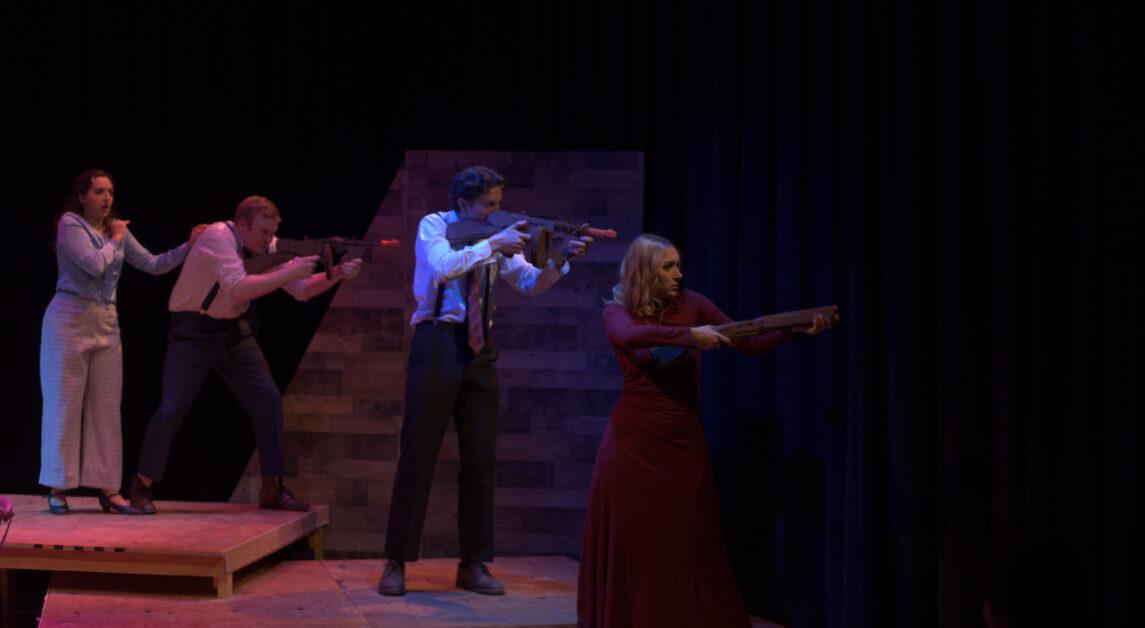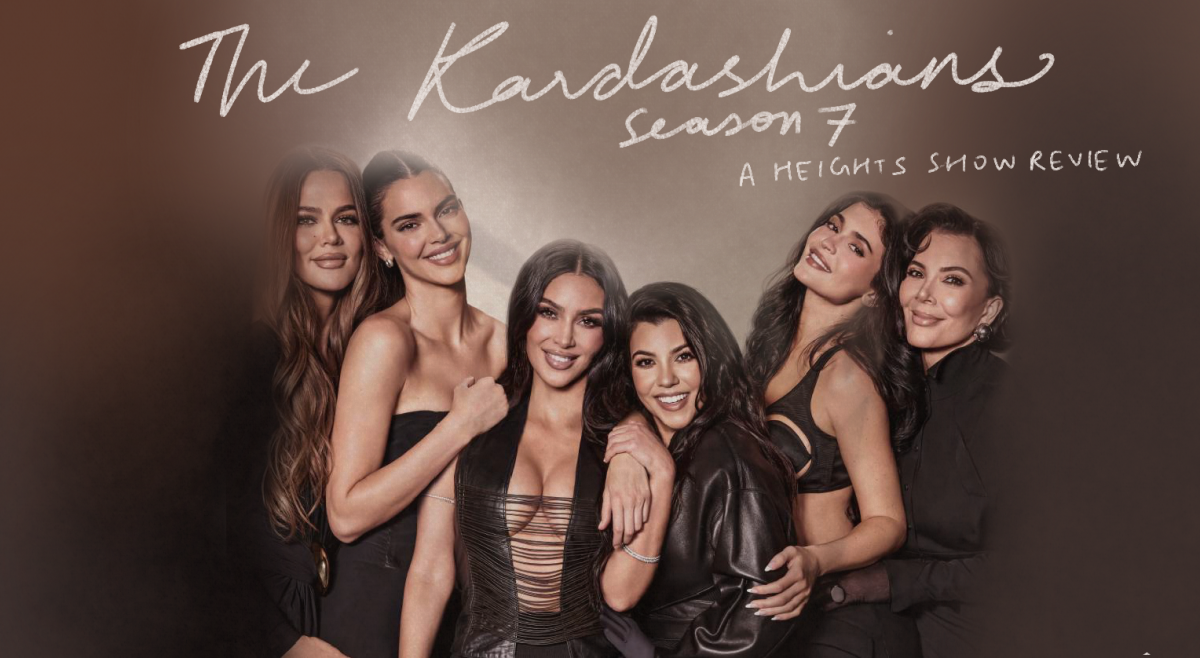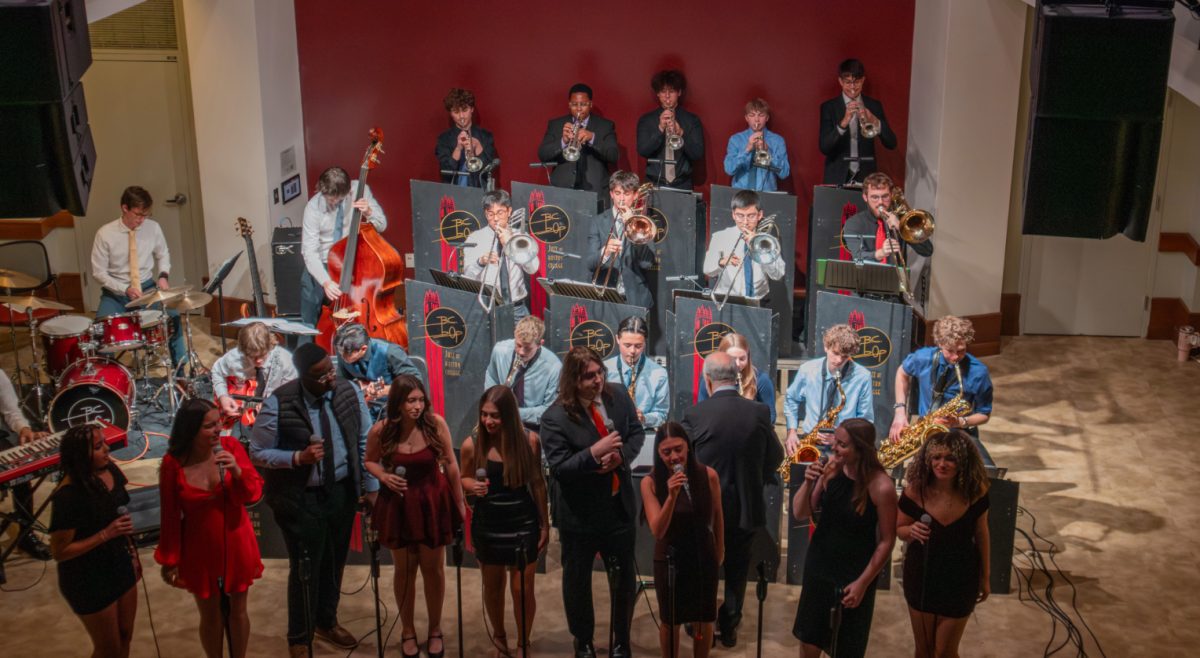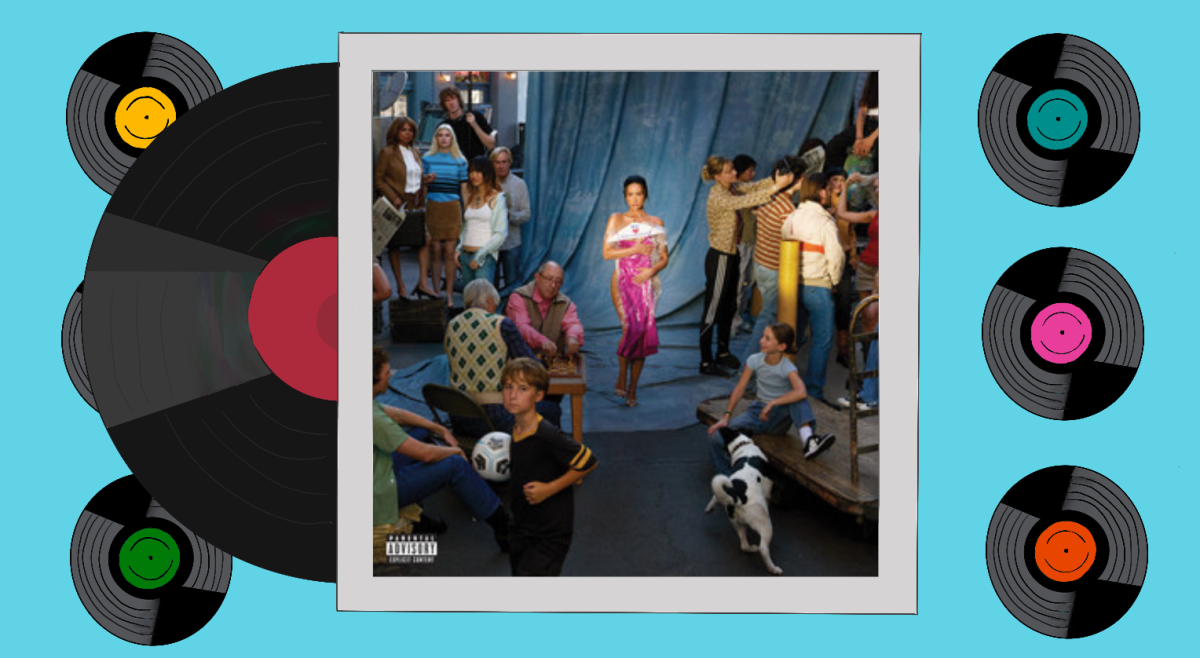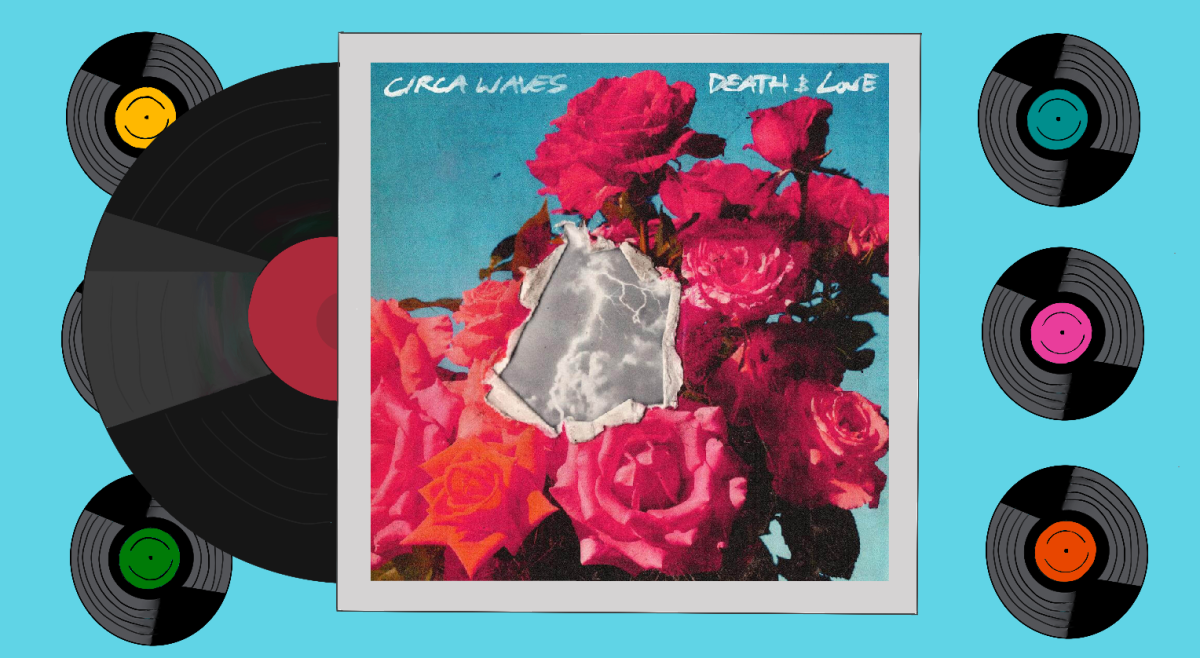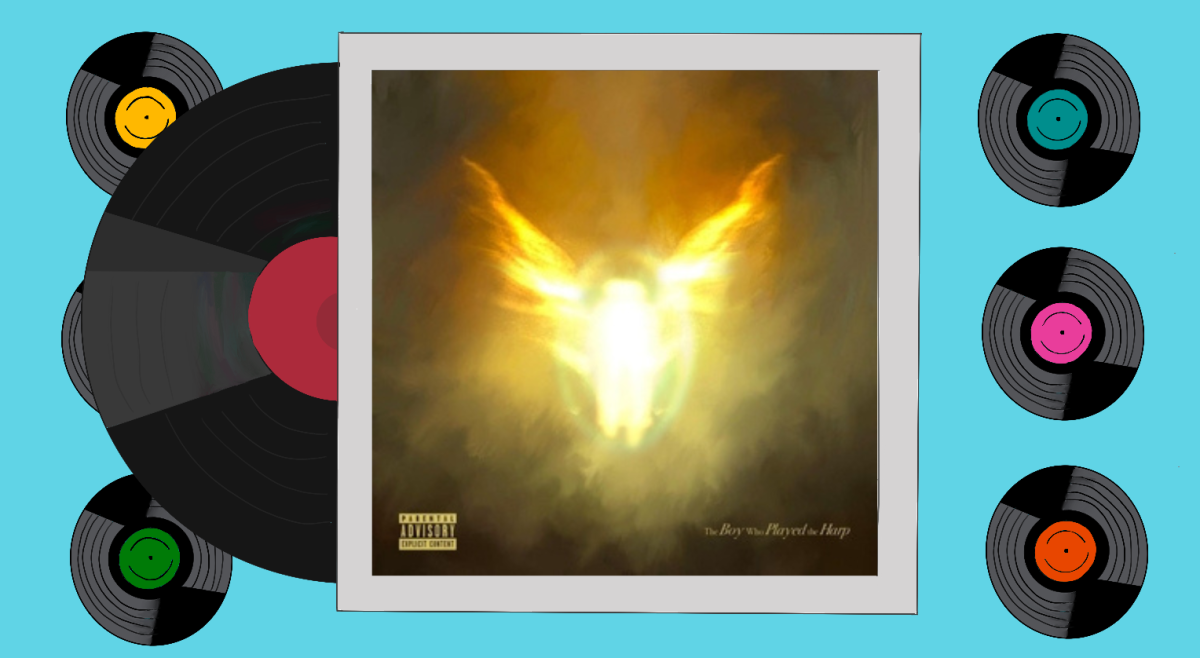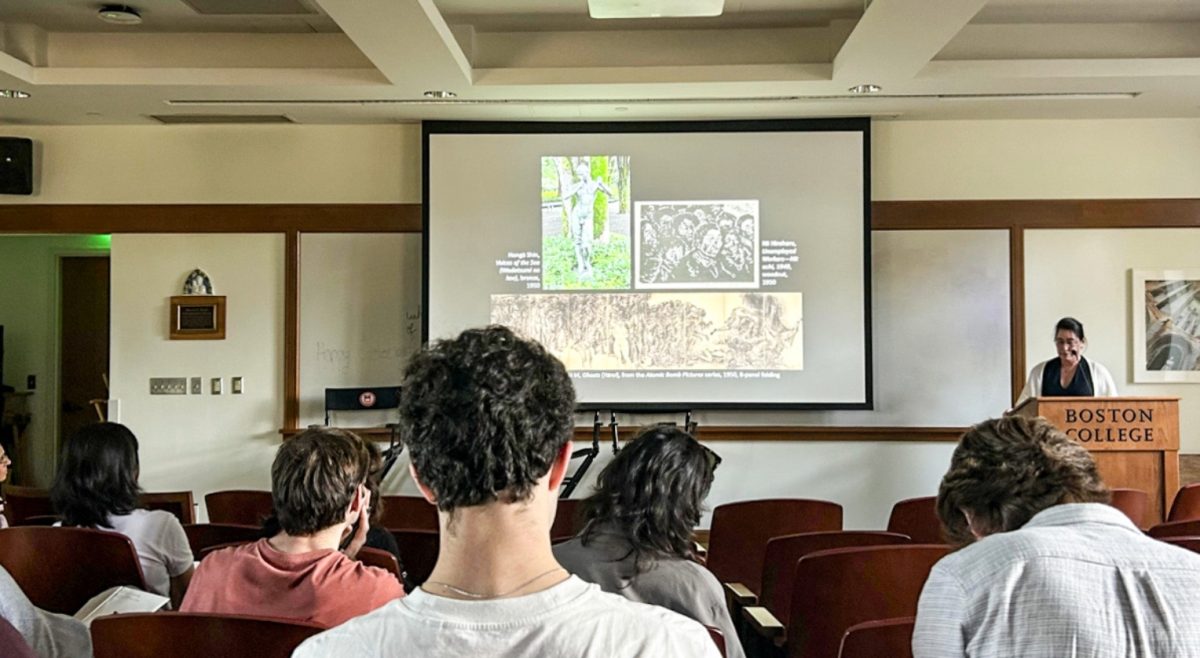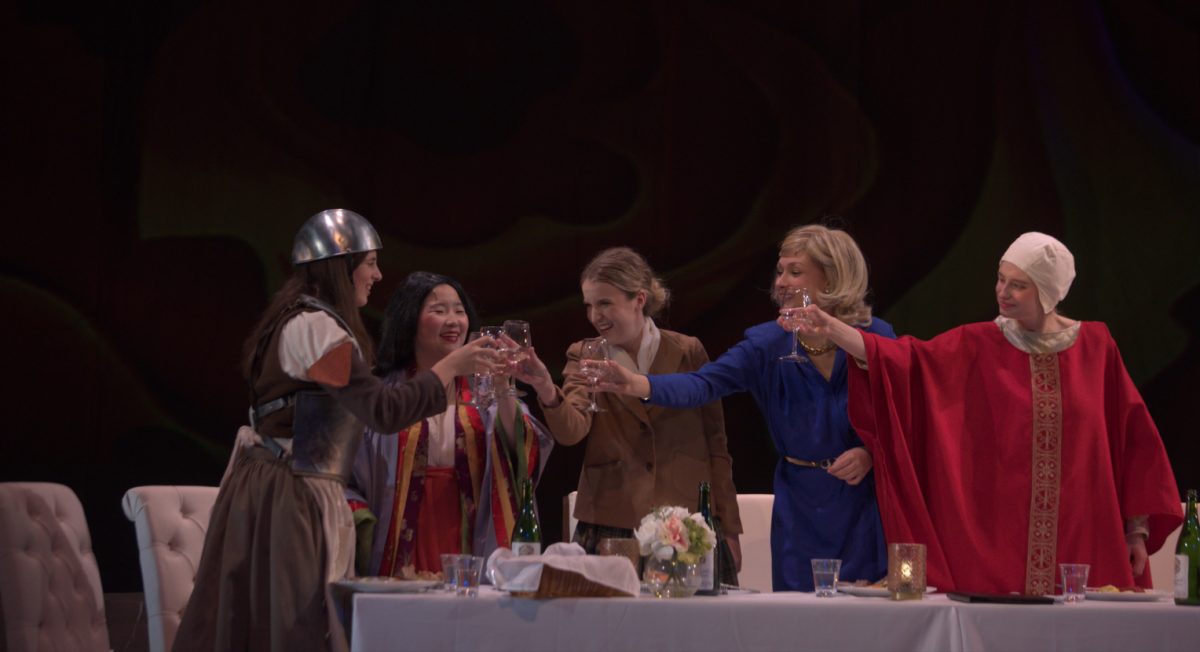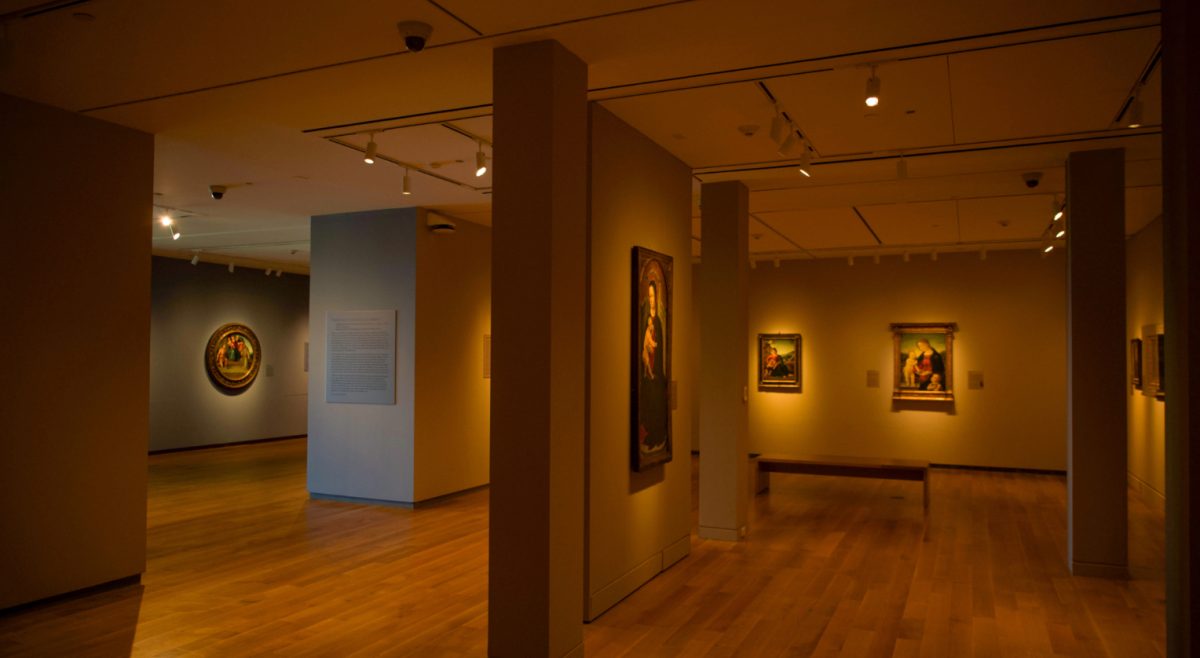Bonnie and Clyde took Robsham Theater hostage April 3 to April 5, immersing Boston College in a twisted version of the American Dream. The smell of fresh lumber and the live band’s haunting rockabilly and bluesy tunes transported attendees to rural Texas.
Bonnie and Clyde is based on a true story, portraying the tale of a reckless love affair during the Great Depression. After Bonnie Parker falls in love with criminal Clyde Barrow, they commit a series of bank robberies and quickly climb their way to becoming the South’s most-wanted criminals.
The play begins with young Bonnie (Bridget Ewing, MCAS ’28) belting her desire to be famous.
“I can see me, you can see me / The main attraction at the picture show / Like Clara Bow,” she sings with a distinct desperation.
The sparkle in her eye communicated her unhealthy obsession with gaining popularity.
Meanwhile, young Clyde (Caroline Casieri, MCAS ’28) eerily proclaims, “I’m gonna be like Billy the Kid … I can see me (Al Capone).”
Casieri looked crazy, her wandering eyes glazing over the audience before both shouting and whispering, “Bang bang, you’re dead.”
This song, “The Picture Show,” accentuated the intensity of Bonnie and Clyde’s desires, emphasizing the lengths they’d go to achieve them.
“The musical centers itself around the rise of Bonnie Parker and Clyde Barrow, tracing their beginnings not to crime, but to the seemingly innocent desire for fame, belonging, and purpose,” Director Amelia Gaffney, CSOM ’26, wrote in the show’s program.
Finn McGurn, MCAS ’26, presented a complex interpretation of Clyde. While Clyde always seemed comfortable with, and even excited by, the idea of murder, he shows fleeting moments of regret and remorse after his first kill. He reflects on what it meant for him to take away a life—that person would never breathe or laugh again.
Nonetheless, he justifies his murders: “It was going to be me or him.”
“[My favorite scene was] Clyde killing that guy in the prison,” Brianna Skeen, CSOM ’26 said. “I was, like, not expecting him to go at it like that … I’m used to seeing [McGurn] in regular life, and I’m like, ‘Oh my God. Like, why is he actually Clyde?’”
Annabelle Bryant, MCAS ’27, delivered an aimless and unhinged Bonnie. Bonnie had nothing going for her—her husband was in prison and made no plans to return to her—so she lived opportunistically. Luckily for Bonnie, Clyde was breaking out of prison when her car broke down on the side of the road, and he decided to help her. Their first meeting quickly ended in a fiery, crazed kiss.
Bonnie protests her mother’s disapproval of Clyde. As her mother worries about Bonnie’s impending death as a result of all the trouble she caused, Bonnie proclaims, “Mama, I’m alive,” expressing the thrill and heightened vitality of her lifestyle.
Bonnie and Clyde’s relationship quickly turns conflagrant and intoxicating. Clyde leaves his once-beloved brother, Buck (Joe Gilhooly, MCAS ’27), to die after a shootout in order to escape with Bonnie. Buck’s wife, Blanche (Allee O’Neil, MCAS ’25), held Buck as he died, shrieking after Clyde, “He’s your brother!”
“Bonnie and Clyde are, like, phenomenal,” Skeen said. “And I’m in awe.”
“Made in America” stood out among the various incredibly layered performances. The preacher, Corey Schiz, MCAS ’27, used his soulful cadence to portray the preacher’s dedication to remaining a respectable citizen amid economic devastation.
“We may be in debt / Wake up in a sweat / But, let’s not forget / We were made in America,” Schiz sang with intense desperation on his face, almost as if he were trying to convince himself of what he was saying.
“I love ‘Made in America’ and the [preacher]—so good,” said Megan Burke, MCAS ’28.
The entire cast delivered standout performances, convincingly and impressively embodying their characters.
“The whole cast is stacked,” lighting designer Ryan Smith, MCAS ’28 said. “There is not one weak link in the cast or crew. Everybody is amazing.”
Gaffney elaborated on the alluring nature of the American Dream, especially during the Great Depression.
“While the American Dream is often viewed as a myth of the 20th century, we are consistently reminded that its ‘promise’ is far from dead,” Gaffney wrote. “Still, the idea that success can be earned by those who want it enough forces us to examine who has access to the American Dream, and moreover, what happens when it is out of reach.”
The musical ends with Bonnie and Clyde driving off into the distance to meet their families together. “How ‘Bout a Dance?” plays for the third time. A song that was once frivolous and flirtatious, insinuating courtship or sex, now carries heavy weight, haunting the couple.
“You’ll lose the blues / And you may lose your heart,” Bonnie sang.
The lyrics initially seem to refer to heartbreak but quickly take on a new meaning. Instead of dancing together, the pair dances with the Devil.
The show ended in a standing ovation and roaring applause.
“Like, actually, it’s the best show I’ve ever seen on a college campus before,” Skeen said.

